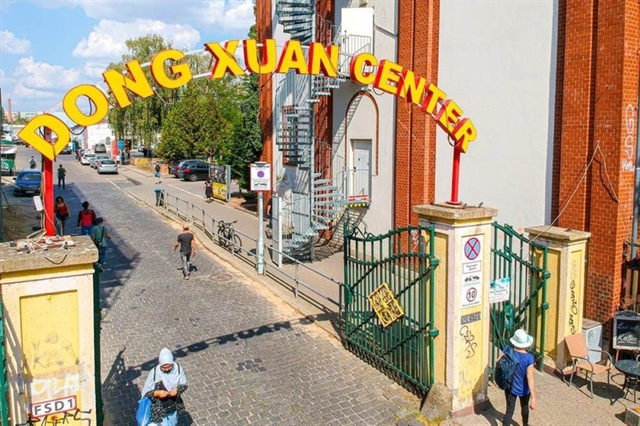 Life & Style
Life & Style

The country is celebrating the Year of the Pig and pigs, one of the 12 local Zodiac animals, have appeared in daily conversation.
71745654PM.jpg) |
| A pig depicted in traditional Đông Hồ paper paintings. |
by Phước Bửu
The country is celebrating the Year of the Pig and pigs, one of the 12 local Zodiac animals, have appeared in daily conversation.
Pigs do not hold an honourable position in Vietnamese culture. However, they appear to be the most popular species among the six domestic animals since early history. Pigs, along with dogs, chickens, goats, horses, and buffalos, make up the full list of domestic animals.
In the past, Vietnamese relied on rice farming and small-scale husbandry, thus almost every family had a pig shed at home. Almost everybody grew up with memories of pig sheds in the backyard.
To Vietnamese people, pigs are at the same time friendly and dirty. A pig often becomes lively whenever someone gets close to its shed. Pigs don’t attack people and their sounds are not scary. However, people avoid being close to the pig sheds because of the bad smell. The fact is that pigs eat and sleep with their dung.
Pigs are rarely seen in worshipping traditions across the country, except La Phù Village on the outskirts of Hà Nội. This village retains a ritual related to pigs that they believe originated in the year 258 BC, in the era of the 18th Hùng King. Every year, the village chooses a family to raise a pig that they call “Mr Pig”. They feed the pig fresh fruit and rice, and bathe it every day. Two days prior to the lunar new year’s first full moon, the villagers kill Mr Pig and decorate him for a ritual parade around the village.
The northern delta also has a festival related to pigs – the pig slaughter festival in Bắc Ninh. However, because of the cruelty, people suggested this bloody festival should not be held anymore.
In general, pigs have a less lively ritual life compared to the other five domestic animals. However, the easy feeding makes the pig popular in husbandry and the animal meat industry. Till now, people in the rural areas of Việt Nam continue to feed pigs with human leftovers taken from the neighborhood.
The popularity of pigs and pork puts pigs at the top of the list of animals killed for sacred ceremonies. Pork is also the most popular kind of meat in the country, which has hundreds of dishes using it as a key ingredient thanks to its characteristics of easy-to-cook and easy-to-combine with others. Vietnamese traditional herbal physicians also suggest pork as a food to have with herbal medicine.
77945654PM.jpg) |
| A pig with its piglets depicted in traditional Kim Hoàng paper paintings. |
Pork is present in almost every meal, including the happiest meal of one’s life – the wedding party. Traditionally, the pig was one of the wedding items that the female’s family asked her spouse’s parents to offer. Culturally, a man was considered to be ready for a wedding if he could afford a pig.
This meant the pig would appear in almost every saying and proverb about weddings.
“Mua heo chọn nái, lấy gái chọn giòng” or ‘Look at the pig’s mother when you buy the piglets; Look at the family when you get marry a girl’ suggests the careful choice of piglets for husbandry and a wife on the side of genetic hierarchy.
“Một vợ nằm giường lèo. Hai vợ nằm chèo queo. Ba vợ nằm chuồng heo” or ‘One wife, sleep well. Two wives, sleep alone in the cold. Three wives, sleep in the pig shed’ suggests a man should not have more than one wife to avoid suffering.
In short sayings, pigs appear in a negative way as people try to use them to describe bad things. For example, ‘as dirty as a pig,’ ‘as dumb as a pig,’ or ‘as lazy as a pig.’
Vietnamese across the country have different words to address the pig. People in the northern region call the pig “lợn” while residents of the Central and Southern regions call them “heo.” It is sometime called ‘trư’ in metaphor and “Hợi” as a Zodiac animal.
The pig was also depicted in traditional painting. The Đông Hồ and Kim Hoàng paper paintings included the images of pigs to illustrate fertility.
To most Vietnamese, the pig symbolises fertility and people would love to give birth to their children in the year of the pig. Twelve years ago, there was a surge of giving birth to “heo vàng” (golden pig) as many couples attempted to have babies born in 2007. The surge challenged the education sector six years later as the number of children registered to first grade in many primary schools increased dramatically exceeding their capacity.
Many people believe that a baby born in the Year of the Pig would have an easy life like a pig, they live leisurely in the sheds and are fed three meals a day, do not have to work hard like others, the rooster, for instance.
In the context that Vietnamese drinkers tent to eat dog meat, cat meat and wild animals during their drinking sessions, chefs try to cook pork with other flavours. “Lợn giả cầy” (Pork with dog meat flavor) is a popular dish.
Anyway, we all wish for a fertile year, especially in business, for everyone to afford a better life in 2019, the Year of the Pig. — VNS




